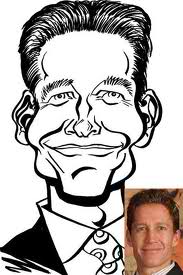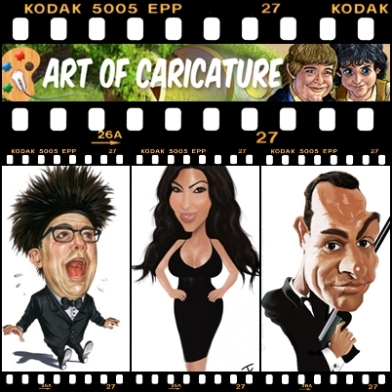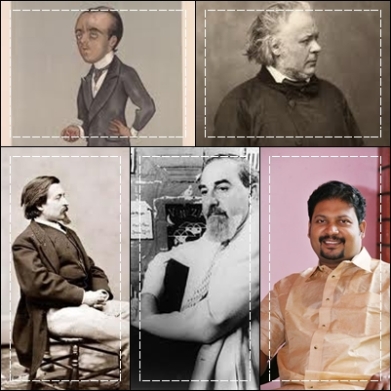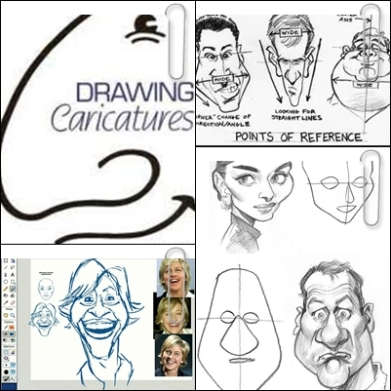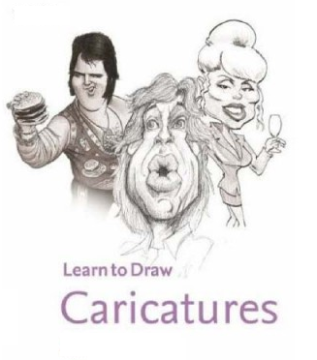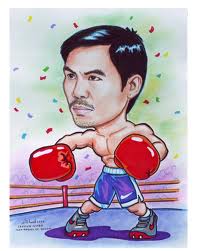
Fireworks as an Art
It is a class of explosive pyrotechnic devices used for culture, religious purposes, and events. The most common use of a firework is a fireworks display. A fireworks event (also called a fireworks show or pyrotechnics) is a display of the effects produced by firework devices. Fireworks competitions are also regularly held at a number of places. Fireworks take many forms to produce the four primary effects: noise, light, smoke and floating materials (confetti for example). They may be designed to burn with flames and sparks of many colors, typically red, orange, yellow, green, blue, purple, and silver. Displays are common throughout the world and are the focal point of many cultural and religious celebrations.

tumblr images
Difference of Firework and Fireworks Firework is a device consisting of a combination of explosives and combustibles, set off to generate colored lights, smoke, and noise for amusement. While, Fireworks is an exciting and spectacular display of art as musical virtuosity and also a display of rage or fierce contention.

How Fireworks are made Fireworks are complex tools that require great care to make, not only for it to perform properly, and also to avoid fatal accident. The following information helps in better understanding on how it is created.
*There is no chemical stated to avoid circumstances
Tube-like fireworks It is made by rolling thick paper tightly around the former, such as a dowel (solid cylindrical rod usually made of wood, plastic, or metal). Though it can be made by hand, most factories of firework uses machinery to develop the tubes. Whenever the tubes is used on a fireworks, at least one end of the tube is plugged for the burning gases and chemicals for it not to escape through that end. It is always made of non-sparking materials such as aluminum and brass ( yellowish alloy of copper and zinc). When a clay is inserted as a plug, it is consolidated with heavy object such as a mallet.

A sleeve is sometimes used for the walls of the tube to prevent it from splitting or bulging.

Aerial Repeater  To make a common square-shaped repeater, several tubes (tube-like fireworks) are fused with each other in rows.
To make a common square-shaped repeater, several tubes (tube-like fireworks) are fused with each other in rows.  Two holes are punched in each tube, small pieces of fuse are placed to transfer fire from tube to tube. Then, the rows are glued on top together, and inserted with fuses to transfer fire between rows. Cardboard are placed after each strips often called as “sandwich” to strengthen the bonds between each part.
Two holes are punched in each tube, small pieces of fuse are placed to transfer fire from tube to tube. Then, the rows are glued on top together, and inserted with fuses to transfer fire between rows. Cardboard are placed after each strips often called as “sandwich” to strengthen the bonds between each part.  The “sandwich” is then turned upright, and a measured black powder for fireworks is distributed to each tube, After that a small tube containing aerial effects is placed into each larger tube. Then, the bottom and sides of the repeater is covered with another cardboard to hold it firmly, followed by plastic cellophane on top and a colorful label on the side.
The “sandwich” is then turned upright, and a measured black powder for fireworks is distributed to each tube, After that a small tube containing aerial effects is placed into each larger tube. Then, the bottom and sides of the repeater is covered with another cardboard to hold it firmly, followed by plastic cellophane on top and a colorful label on the side.



First Fireworks display on a supertall skyscraper
History
It was said that during the Song dynasty (960-1279) when fireworks were discovered. A Chinese monk by the name of Li Tian, who lived in the city of Liu Yang in the province of Hunan. Some says that it was discovered by accident or serendipity by a Chinese cook that accidentally mixed charcoal, sulphur, and saltpeter that was commonly found in a Chinese kitchen those days. The mixtures of these elements cause the burning and when in a compressed enclosure like bamboo, it will explode. Another claim is that it was originated in India but it has been declared the Chinese are the discoverer of an impressing discovery that amazed many eyes through the ages. In China, they celebrated annually the invention of firecrackers every 18th of April in honor of Li Tian and made a temple for him during the Song Dynasty. The Hunan province in China remains as the main production area of fireworks in the world. These firecrackers were bamboo shoots filled with gunpowder. They were exploded at the commencement of the new year to scare away evil spirits. Much of the modern focus of fireworks is on light and color, but loud noise (known as “gung pow” or “bian pao”) was desirable in a religious firework, since that was what frightened the spirits. By the 15th century, fireworks were a traditional part of other celebrations, such as military victories and weddings. The Chinese story is well-known, though it’s possible fireworks really were invented in India or Arabia.

Settlers brought fireworks over to the Americas around the 1600s, where they continued to be used to celebrate special occasions and to impress or scare off Native Americans. The very first 4th of July celebration was in 1777, only one year after the signing of the Declaration of Independence. The United States was still in the midst of the Revolutionary War and the outcome was still uncertain, but beautiful displays of fireworks instilled a sense of hope and patriotism in the citizens of the young nation. When trade relations were established between the U.S. and China less than a century later, Chinese firecrackers became a major import in America.
For nearly 1000 years, the only colors that could be produced by fireworks was the orange flash/sparks from black powder, and white sparks from metal powders. But in southern Italy in the 1830s, scientific advancements in the field of chemistry enabled pyrotechnicians (the modern term for the old “fire masters”) to create reds, greens, blues, and yellows by adding both a metallic salt (strontium=red, barium=green, copper=blue, sodium=yellow) and a chlorinated powder to the firework composition. Potassium chlorate (KClO3), a new oxidizer that burned faster and hotter than potassium nitrate, allowed pyrotechnicians to make the new colors deeper and brighter. The harnessing of electrical energy made it possible to obtain pure magnesium and aluminum by electrolysis, which also made fireworks burn brighter. When fine
aluminum powder was mixed proportionally with an oxidizer, the resulting mixture – flash powder – burned much hotter and faster than black powder, allowing for the manufacture of louder firecrackers and salutes in aerial fireworks.

Another name for firework is Pyrotechnics, comes from Greek word pyro which means fire or heat. Any firecrackers, rockets, explosives or anything that produces lights and sound in an explosion are considered fireworks or pyrotechnics. Normally, fireworks are commonly used to drive off evil spirits and ghosts during old times because it is believed that they are frightened of loud sounds that firecrackers produced, but was modernized and used as a weapons in battles.

Dragon Fireworks Inc
Manufacturers of Fireworks.
1. Dragon Fireworks Inc., staying true to its company motto of “Safe, Quality Fireworks is our Commitment”, is the Philippine Fireworks Industry leader and the country’s largest fireworks manufacturer and exporter.
2. Ajanta Fireworks Industries was founded by Late Shri A. Arunachala Nadar in the year of 1974. With our founder’s hard work and passion towards development, the company has emerged as reputed manufacturers in the Indian Fireworks Industry. We are delighted in presenting our product catalogue for the coming season. We have designed this catalogue with the theme “Celebration of the World”, show casing the various celebration across the world along side with our colourful products.
3. The site of Pyrotechnics Guild International, an independent worldwide nonprofit organization of amateur and professional fireworks enthusiasts. Site includes history of fireworks, fireworks safety guidelines, along with links to fireworks associations, journals, display operators, clubs, and manufacturers and distributors.
4. US Dept. Of Labor. Occupational Safety & Health Administration. Developed as part of the newly established Alliance between the American Pyrotechnics Association and OSHA, the initial emphasis on these pages are on common hazards and solutions in the retail sale and display of pyrotechnics. Issues in the manufacture and transport of these devices are not currently addressed.
5. Fireworks: NOVA Online is produced for PBS by the WGBH Science Unit. Wideranging site covering history and science of pyrotechnics, along with new high tech advances, Includes a teacher’s guide.

Firework competitions:
- The World Fireworks Championship is one of the largest pyrotechnic competitions in the world. The competition takes place annually over three weeks in December and features separate fireworks displays from six international pyrotechnic production companies. Competitors come from all over the globe, with participating teams providing a 25 minute long ‘pyromusical’ show for the attending crowds. At the end of each display, a score is awarded by a team of four international judges. By the tournament’s conclusion, the competitor with the highest score is presented with the Winner’s Trophy, which is made from solid gold. The design of the trophy is influenced by the host city taking part.
- Montreal Fireworks Festival is an annual competition held in Montreal, Quebec, Canada. It has been held yearly in La Ronde over the Dolphins Lake, since 1985. The display is hailed as the best and largest fireworks festival in the world. It hosts an estimated 3 million each year, with approximately 6,000 fireworks set off during each show. Each summer, eight or nine pyrotechnical companies from different countries present a 30-minute long pyromusical show, competing for the Gold, Silver and Bronze Jupiters or trophies.
- The World Pyro Olympics is an annual competition amongst fireworks manufacturers held in the Philippines which runs for five days. Two countries fire each day; the last participant fires on the final evening of the event. Awards, such as the People’s Choice, are given out after the exhibition. The crowning of the World Pyro Olympics Champion ends the event.
Fireworks World Records:

Kuwait
Largest firework display of all time
77,282 firework projectiles were launched in celebration of the 50th Anniversary of Kuwait’s constitution, becoming the largest in history. The display was part of celebrations on November 10, 2012 on the coastal Gulf Road.

Niagara Falls
Longest firework waterfall
The world’s longest firework waterfall was the ‘Niagara Falls’, which measured 3,517.23 m (11,539 ft. 5 in) when ignited on August 23, 2008 at the Ariake Seas Fireworks Festival, Fukuoka, Japan.

Cebu, Philippines
Most firework rockets launched in 30 seconds
The most firework rockets launched in 30 seconds is 125,801, organized by Pyroworks International Inc. (Philippines), in Cebu, Philippines, on May 8, 2010.

Portugal
Largest firework rocket
The largest firework rocket is 13.40 kg (29.53 lb.) and was produced and launched by Associaçao Nacional de Empresas de Produtos Explosivos (Portugal) at the 12th International Symposium on Fireworks in Oporto and Vila Nova de Gaia, Portugal, on October 13, 2010.
Sources:
http://www.tumblr.com (images)
http://www.pyrouniverse.com/manufacture/plugmaking.gif
http://www.wfboom.com/images/spot_definitions.jpg
http://www.pyrouniverse.com/manufacture/repeater3.gif
http://www.pyrouniverse.com/manufacture/repeater4.gif
http://www.rizerfireworks.com/images/556.jpg
http://rizerfireworks.com/images/61_shot_assorted_aerials.jpg
http://25.media.tumblr.com/tumblr_m6lw37ejE11ra56fxo1_500.gif
http://www.allsparkfireworks.com/blog/wp-content/uploads/2011/08/firework-festival-of-light.jpg
http://www.festival-pyrotechnique-cannes.com/rubrique.php3?id_rubrique=2
Members:
Shou Jhon D. Tochinai
James Patrick Barredo
Martin Joshua Aquino
Dominique De Guzman
Aian Krystal Gayle Sulpico
Joseph Darren Santana















